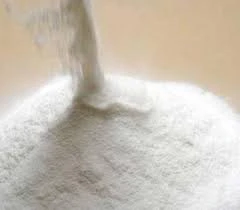
Dec . 22, 2024 08:23 Back to list
hpmc synthesis
A Comprehensive Overview of HPMC Synthesis
Hydroxypropyl Methylcellulose (HPMC) is a cellulose derivative commonly used in various applications across different industries, including pharmaceuticals, food, and construction. Its synthesis involves the modification of cellulose, which is a naturally occurring polymer made from plant materials. HPMC is valued for its emulsifying, thickening, and film-forming properties, making it an important additive in many products.
The Basics of Cellulose and Its Derivatives
Cellulose is the most abundant organic polymer on Earth, primarily found in the cell walls of plants. As an insoluble fiber, it provides structural support and rigidity to plant cells. The modification of cellulose to create derivatives such as HPMC begins with the isolation of cellulose fibers from natural sources, typically wood or cotton. These fibers undergo a series of chemical treatments to alter their properties.
Step-by-Step Synthesis of HPMC
1. Cellulose Extraction The extraction process begins with the treatment of plant materials with alkalis or acids to remove lignin and hemicellulose, ultimately yielding purified cellulose. This stage is crucial as the purity of cellulose affects the properties of the final HPMC product.
2. Etherification Reaction The core of HPMC synthesis is the etherification reaction. Cellulose reactants are treated with propylene oxide and methyl chloride or other similar methylating agents under controlled conditions. This chemical reaction replaces the hydroxyl groups (-OH) of the cellulose with hydroxypropyl and methyl groups, leading to the formation of hydroxypropyl methylcellulose.
3. Control of Molar Ratios The degree of substitution (DS) of hydroxypropyl and methyl groups can be controlled by adjusting the molar ratios of cellulose, propylene oxide, and methylating agents. A higher DS typically enhances water solubility and thermal stability, which are critical properties for many applications.
hpmc synthesis

4. Purification After the etherification process, crude HPMC is obtained which may contain unreacted reagents and by-products. Therefore, purification is essential. This can be achieved through washing, precipitation, and drying techniques to yield a high-purity final product.
5. Characterization The synthesized HPMC is then characterized using various techniques such as nuclear magnetic resonance (NMR), Fourier-transform infrared spectroscopy (FTIR), and viscosity measurement to confirm its structure, molecular weight, and solubility characteristics.
Properties and Applications of HPMC
HPMC is renowned for its versatile properties. It is non-toxic and biocompatible, which makes it an ideal choice for pharmaceuticals, particularly in drug formulations where it acts as a binder and film former. In the food industry, HPMC is used as a thickening agent, stabilizer, and emulsifier, promoting the desired texture and consistency in processed foods.
In the construction industry, HPMC is a popular additive in cement-based products like mortar and tile adhesives, improving workability, water retention, and adhesion. Its ability to retain water enhances the performance and lifespan of construction materials.
Conclusion
The synthesis of hydroxypropyl methylcellulose reflects the intersection of natural materials and modern chemical processes, resulting in a product that meets a wide range of industrial needs. As demand for environmentally friendly and effective additives grows, the importance of HPMC and its synthesis will continue to expand. With ongoing research and innovation, the applications of HPMC are likely to grow even further, reinforcing its status as an essential component in various formulations across multiple industries. Understanding its synthesis not only reveals the complexities involved in production but also highlights the potential for future advancements in materials science.
-
Versatile Hpmc Uses in Different Industries
NewsJun.19,2025
-
Redispersible Powder's Role in Enhancing Durability of Construction Products
NewsJun.19,2025
-
Hydroxyethyl Cellulose Applications Driving Green Industrial Processes
NewsJun.19,2025
-
Exploring Different Redispersible Polymer Powder
NewsJun.19,2025
-
Choosing the Right Mortar Bonding Agent
NewsJun.19,2025
-
Applications and Significance of China Hpmc in Modern Industries
NewsJun.19,2025







